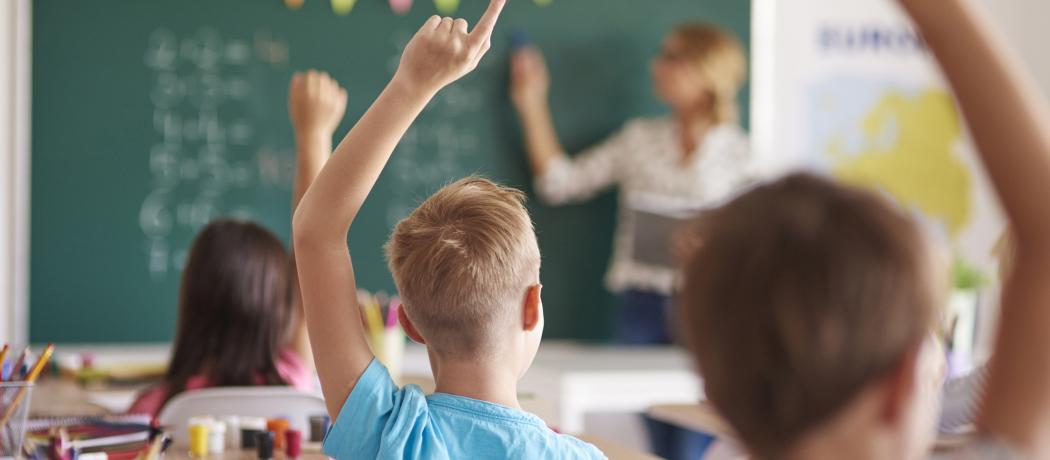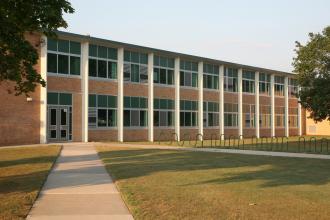A recent interview in the Canadian Medical Association Journal cautioned that reopening schools should be delayed until more robust data are available, and that school attendance should, therefore, remain voluntary.[1] This would provide an option for high-risk students and staff who may suffer from severe complications if they were to contract COVID-19.[2]
Research, however, shows that the prolonged school closure has negatively impacted the social and emotional well-being of school-aged children due to social isolation and increased screen time.[3,4] Schools provide critical educational and health benefits to children, and education is an important social determinant of health.
There is a national debate among parents, caregivers, policymakers, and the teachers’ union over whether BC schools should reopen amid the COVID-19 pandemic, but students’ voices are largely missed in that dialogue. Meanwhile, the National Academies of Sciences, Engineering, and Medicine; Toronto’s Hospital for Sick Children (SickKids); and the American Academy of Pediatrics’ guidelines urge in-person full-time instruction, especially for kindergarten through grade 5 and for students with special needs because they benefit from an environment where they have to maintain attention and regulate their own behaviors and emotions.[5,6]
SickKids has published new guidelines on how to safely reopen schools. The report, along with other guidelines, reiterates the importance of weighing the risks of COVID-19 transmission among children against the harm of keeping them out of schools in September.[6]
As public health organizations look to reopen schools, understanding transmission potential in children will be important to guide public health measures. The Centers for Disease Control and Prevention issued a Morbidity and Mortality Weekly Report in early August based on data from an overnight camp in Georgia where 260 of 344 children and staff tested positive for COVID-19.[7] As BC makes plans to reopen school in September, we think that it is important to have closer look at this incident and learn from it:[7,8]
1. Masks weren’t required for the campers.
2. Spaces were not ventilated consistently (i.e., windows and doors kept open).
3. Extensive group-based indoor activities were common, including singing and clapping.
We strongly believe it is important to disseminate this information widely to attract attention from school educators before we restart schools. It is necessary to increase appropriate mask-wearing, frequent hand washing, and physical distancing; keep class sizes small; conduct classes outside whenever possible; and make special accommodations for high-risk students, teachers, and other school staff.
It is equally important to pay close attention to the findings in two other research studies; it has been demonstrated that young children can be potential drivers of SARS-CoV-2 spread in the general population.[9,10] With the publication of these two studies, it cannot be assumed that children are incapable of spreading the virus.
The mitigating factors that we recommend above should be strictly enforced using additional staff. On the first day of school all students must receive school-reopening hygiene guidelines, disinfection protocols, and instructions. This should include comprehensive but short educational instructions on the best way to prevent SARS-CoV-2 through good respiratory hygiene, regular hand washing, and covering of the mouth and nose whenever they sneeze or cough. It is also important to make students understand their social obligation to wear masks to protect themselves and those around them.
—Ediriweera Desapriya, PhD
—Yuan Wei Peng, BSc
—Marie Maddumage, MBBS
—Sarah Yassami, MD
—Jay Herath, PhD
References
1. Vogel L. Into the unknown. CMAJ News. Accessed 2 September 2020. http://cmajnews.com/2020/05/01/id-panel-1095869.
2. Yousif N. Reopening schools safely is now Canada’s most urgent task. Maclean’s. Accessed 2 September 2020. www.msn.com/en-ca/news/canada/reopening-schools-safely-is-now-canadas-most-urgent-task/ar-BB17Eri0.
3. Wang G, Zhang Y, Zhao J, et al. Mitigate the effects of home confinement on children during the COVID-19 outbreak. Lancet 2020;395(10228):945-947.
4. Xie X, Xue Q, Zhou Y, et al. Mental health status among children in home confinement during the coronavirus disease 2019 outbreak in Hubei Province, China. JAMA Pediatr 2020. doi: 10.1001/jamapediatrics.2020.1619
5. National Academies of Sciences, Engineering, and Medicine. Reopening K-12 schools during the COVID-19 pandemic: Prioritizing health, equity, and communities. National Academies Press; 2020.
6. The Hospital for Sick Children (SickKids). COVID-19: Guidance for school reopening. Accessed 2 September 2020. www.sickkids.ca/PDFs/About-SickKids/81407-COVID19-Recommendations-for-School-Reopening-SickKids.pdf.
7. Szablewski CM, Chang KT, Brown MM, et al. SARS-CoV-2 transmission and infection among attendees of an overnight camp — Georgia, June 2020. MMWR Morb Mortal Wkly Rep 2020;69:1023-1025.
8. JAMA Network. AMA COVID-19 daily video update: What’s behind the continuing high number of new cases? Accessed 2 September 2020. www.ama-assn.org/delivering-care/public-health/ama-covid-19-daily-video-update-what-s-behind-continuing-high-number.
9. Moreira LP, Watanabe ASA, Camargo CN, et al. Respiratory syncytial virus evaluation among asymptomatic and symptomatic subjects in a university hospital in Sao Paulo, Brazil, in the period of 2009-2013. Influenza Other Respir Viruses 2018;12:326-330.
10. Heald-Sargent T, Muller WJ, Zheng X, et al. Age-related differences in nasopharyngeal severe acute respiratory syndrome coronavirus 2 (SARS-CoV-2) levels in patients with mild to moderate coronavirus disease 2019 (COVID-19). JAMA Pediatr 2020. doi: 10.1001/jamapediatrics.2020.3651.
This post has not been peer reviewed by the BCMJ Editorial Board




This is an important public health issue with heavy burdens on our children and their foreseeable future, parents and caregivers worldwide. Almost every major medical journal has dedicated at least one specific article on the important theme “school reopening safely during the pandemic” and “school closure and children health and well being” (1, 2, 3, 4, 5). Indefinite school closures have affected our vulnerable children’s safety, welfare and wellbeing in different ways. As reported, 1 in 3 child abuse and neglect incidents are investigated and bought in to the attention of authorities by the school counselors and social workers (6). School closures may have prevented reporting these incidents in a timely sensitive manner (5). Reports show that the suspected child abuse or neglect is down as much as 40 per cent recently (6).
In contrast, a recent UNICEF report further highlights that the economic instability during the pandemic and lack of access to schools and associated supports, and increased confinement at home with potential exposure to domestic violence (7).
Improving child and youth well-being in Canada is a utmost important matter of Canada’s 8 million children. Unfortunately, Canada ranks 30th out of 38 wealthy countries in child and youth well-being (7).
REFERENCES:
(1). Wang G, Zhang Y, Zhao J, Zhang J, Jiang F. Mitigate the effects of home confinement on children during the COVID-19 outbreak. Lancet. 2020;395(10228):945-947. doi:10.1016/S0140-6736(20)30547-X
(2). Sprang G, Silman M. Posttraumatic stress disorder in parents and youth after health-related disasters. Disaster Med Public Health Prep. 2013;7(1):105-110. doi:10.1017/dmp.2013.22
(3). Xie X, Xue Q, Zhou Y, et al. Mental health status among children in home confinement during the coronavirus disease 2019 outbreak in Hubei Province, China. JAMAPediatr. Published online April 24, 2020. doi:10.1001/jamapediatrics.2020.1619
(4). Martin EG, Sorensen LC. JAMA Network Health Forum-Protecting the Health of Vlnerable Children and Adolescents during COVID-19–Related K-12 School Closures in the US-https://jamanetwork.com/channels/health-forum/fullarticle/2767411
(5). Sharfstein JM, Morphew CC. The Urgency and Challenge of Opening K-12 Schools in the Fall of 2020 [published online ahead of print, 2020 Jun 1]. JAMA. 2020;10.1001/jama.2020.10175. doi:10.1001/jama.2020.10175
(6). Rabson M. Advocates worry coronavirus pandemic putting more children at risk for abuse-https://globalnews.ca/news/6851290/coronavirus-child-abuse-risk/
(7). UNICEF REPORT CARD 16 (2020) -https://www.unicef.ca/en/unicef-report-card-16